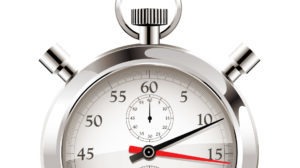Since its inception, the injection molding process has primarily operated in one traditional way — what is known as a cold runner system. Here, the plastic or rubber substrate is heated to melting and injected into the mold at a fixed point (or several fixed points) called the sprue. A key point to remember here is that the molding material is injected from outside the mold (using a piston or other pressurizing method) through “runners” (or conduits for the material) built into the mold, and then into the cavity itself. The runner in this process cools along with the rest of the part and essentially becomes a part of the finished product itself, and must be ejected, potentially separated from the finished part, and then recycled and reground into reusable substrate.
In cold molding, the mold itself is not heated (hence the name), and so the heated substrate begins the cooling process almost immediately upon contact with the internal walls of the cavity. While this method remains an acceptable, useful and productive method of manufacturing most injection molded parts, it can encounter limitations, some of which come as a result of this immediate cooling. We’ll look more at these limitations shortly.
In recent years, however — since the early 2000s — companies have been innovating with other methods of injection molding, in order to overcome some of those process limitations. The new method at the forefront — called the hot runner system — injects the heated, liquefied substrate directly into the mold cavity through nozzles built into the mold. Thus, the “runner” in this case is the pathway through which the heated substrate is traveling, and at no point does the substrate there cool and harden. In essence, the hot runner system eliminates the runner as a part of a finished product.
Further, the mold itself is heated during the injection process and then cooled later, once the entire cavity has been filled. Keep in mind that there are several ways that an injection mold can be heated for the hot runner process; for instance, using hot water, hot oil, steam or even induction heating for rapid heating and cooldown. This heating process helps to eliminate some of the process issues inherent to the cold runner system.
Let’s take a look at what some of those issues are, before looking more at the differences between hot and cold runner injection molding and how each process can benefit you.
Thin walls. A common best practice for cold runner injection molding is to avoid thin walls. This is because when the heated substrate encounters the cooler walls of the cavity, it immediately begins to harden. If the walls are too close, it can cool through, creating a plug that impedes the rest of the substrate from getting through. This problem also can create abnormal cooling times as the cooled substrate is reheated and re-cooled by the hot, liquefied plastic or rubber.
Flow rate issues. Cold molding can encounter issues with flow rates as the substrate makes its way through the runners and fills the cavity, already beginning the cooling process. Cooling times can become more unpredictable in these cases, creating unreliable flow rates that can lead to rejection or failure of the finished part due to issues like incomplete mold filling or sink marks.
Now let’s take a look at some of the advantages that the hot runner injection molding can offer, as well as situations where the cold molding system may remain the most cost-effective and beneficial option.
No runners means less waste. In the hot runner system, any residual substrate that ran through the runner chambers but not into the mold cavity remains heated and liquefied, and thus runs straight through the mold and back into the “pool” of readily available molding material to use on the next cycle. In cold molding, this runner was either discarded (meaning material waste) or, in a more time-consuming process, reground and recycled into that pool of material.

Faster cycle times. As mentioned above, the runner reclamation process takes time and creates a potential loss of resources if this time investment is not made. By eliminating all runner concerns, hot runner systems can eliminate these finishing processes and potentially speed up cycle times. Remember that heating and cooling the mold in a hot runner process also takes additional time — time that is often offset by the savings associated with eliminating the runner, but it is worth it to discuss your options with your injection molding service provider.
A “cleaner” finished product. Removing runners from cold molded parts, whether through robotics or manual removal, involves a mechanical removal process. If a clean break or shear is not achieved, it can potentially affect the acceptability of your finished product, depending on your cosmetic and operational requirements. Hot molding also can help to eliminate many issues like burn marks or other surface irregularities that can occur where the temperature of the mold and the substrate is not as closely controllable or monitored.
In spite of these advantages, it’s important to remember that cold runner injection molding is still a viable and widely used process. Your injection molder should be well versed in the benefits and shortcomings of each process, and should be open to a discussion with you to determine your best option. Here are some ways cold molding can still be useful.
Lower tooling costs. Choosing cold or hot molding involves weighing costs over a long-term production process. Cold molding tooling will be less expensive upfront, while the more complex requirements of a hot mold create a corresponding increase in price (which can be offset by the faster cycle times described above). For shorter production runs, however, a cold runner system may still be the most advantageous for you.
Broader range of material. The inherent chemical makeup of most injection molding substrates make them highly sensitive to temperature fluctuations, especially extreme temperatures. The nature of the hot runner system means that fewer materials are suitable and conducive for use in the process.

Easier colorant options. While hot runner injection molding can easily have colorants mixed in to the process, it can be more difficult to change out those colors throughout a production run. Cold runner injection molding makes it much easier to apply different color options either to the molding substrate or to the finished product.
As you can see, there is not one clear “best choice” for an injection molding process. Your best option is always to discuss your needs with your injection molder.



